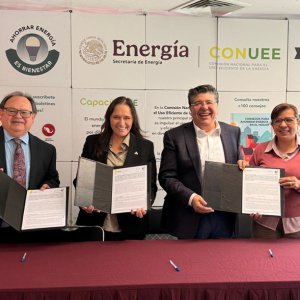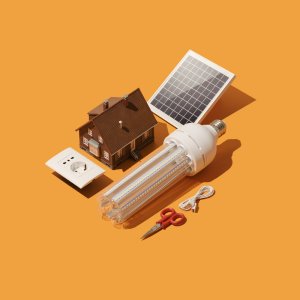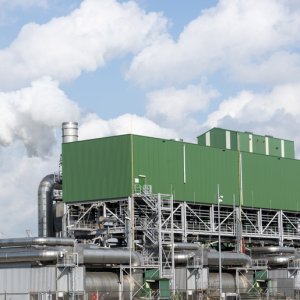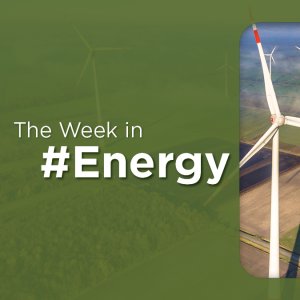If Not for the Air, Then for the Water

STORY INLINE POST
As many people know, water covers 70 percent of our planet’s surface, but only 3 percent of the world’s water is freshwater, and two-thirds of that is unavailable for our use. Because of this, more than 1 billion people worldwide lack access to water.
As of today, more than 700 million people in 43 countries suffer dramatic water shortages. By 2025, 1.8 billion people will live in regions and countries with absolute shortages of water, and two-thirds of the world’s population will be under water stress. The consequences of this will range from extreme hunger to diseases and the full extinction of all kinds of species (Other Uses and Types of Water, 2021).
As the World Wild Fund expressed, at the current consumption rate, this situation will get a lot worse. By 2025, two-thirds of the world’s population may face water shortages. And ecosystems around the world will suffer even more (WWF, 2021).
The debate between renewable energy and conventional energy has been long and exhausting. Efficiency versus Intermittence, Clean versus pollutant, Global Warming, CO2, Costly versus Cheap, etc. When it comes to the environmental impacts of burning coal and natural gas, we tend to focus most of our attention on carbon dioxide emissions. And every time renewable energy wins a new battle against generation using fossil fuels, a new question mark appears.
We have seen discussions about renewables being more expensive, less reliable, not really favoring global warming or decreasing the CO2 footprint. But, what if we take a different approach? What is the most important natural resource worldwide? And that, in fact, is disappearing faster and faster every day. I am talking about water.
Discussions around renewable energy overtaking the energy matrix have been disputed because of renewable energy’s lack of reliability, which can be solved with a diversified matrix of the different renewable energy sources, plus the exponential advancement in energy storage. Another argument is the cost of installing renewables against cheaper technologies, such as gas-powered facilities; however, in the last five years, we have seen that cost decrease so much that the argument falls apart by itself. Now, what if we add one more advantage, one that could be even more important than all of the others: Water waste.
There have been many calculations on how much water each megawatt hour of electricity generated from either coal or natural gas uses. For example, researchers from Duke University stated that water is needed in coal production for mining, cleaning and transportation, and it also plays a huge role in processing and transporting natural gas. (DeWeerdt, 2019). Overall, the generation of electricity from coal sources is more than twice that of natural gas sources, and coal is one of the main sources promoted in Mexico for power generation.
Furthermore, according to a new study by Finland’s LUT university, renewables consume between 1 percent and 15 percent of the water that coal and nuclear power plants use to produce one MWh of output (Emiliano, 2019), which means that 100 percent renewables would result in 95 percent less water consumption for power generation. That is water that could then be used for more important purposes, such as agriculture, aquatic ecosystems and fighting diseases.
Different studies estimate that by 2050, global demand for energy will nearly double, while water and food demand is set to increase by over 50 percent. During this stage, solar PV or wind could withdraw up to 200 times less water than a coal power plant to produce the same amount of electricity, making renewables crucial for water sustainability. Additionally, water scarcity will result in distributing greater volumes of water across much longer distances, requiring hydraulic infrastructure with more energy inputs that will cause an increase in water provision, making it a vicious cycle with no positive outcome unless we do something about it.
Making the right decisions now to incentivize renewable energy will avoid greater damage in the future than that already estimated. Renewable energy by itself is a sea of opportunities, and when combined with hydration and cleaning processes, the benefits are remarkable. These can range from lower utility prices to efficient and scalable water and energy infrastructure in even the most remote and impoverished villages and towns. Clean energy has only positive implications for everyone.
Bibliography:
DeWeerdt, S. (2019). The progressive water savings from switching to renewable energy. Obtenido de https://www.anthropocenemagazine.org/2019/10/one-more-reason-to-switch-to-renewable-energy-saving-water/
Emiliano, B. (2019). 100% renewables means 95% less water consumption for conventional power generation. Obtenido de https://www.pv-magazine.com/2019/12/12/100-renewables-means-95-less-water-consumption-for-conventional-power-generation/#:~:text=2022-,100%25%20renewables%20means%2095%25%20less%20water%20consumption%20for%20conventional%20power,from%200.1%25%20to%2014%25
Nichols, M. R. (2020). Here’s How Renewable Energy Benefits the Wastewater Industry. Obtenido de https://www.altenergymag.com/article/2020/01/heres-how-renewable-energy-benefits-the-wastewater-industry/32592
Other Uses and Types of Water. (2021). Obtenido de https://www.cdc.gov/healthywater/other/index.html
WWF. (2021). World Wild Fund. Obtenido de https://www.worldwildlife.org/threats/water-scarcity#:~:text=As%20a%20result%2C%20some%201.1,one%20month%20of%20the%20year.&text=By%202025%2C%20two%2Dthirds%20of,world%20will%20suffer%20even%20more.
























